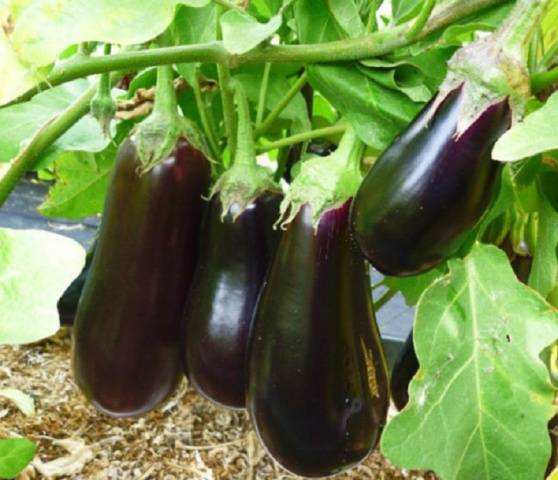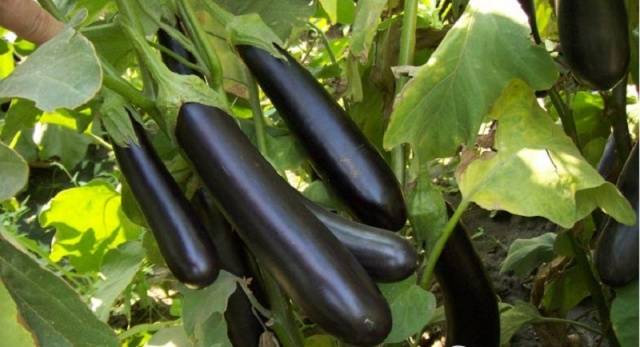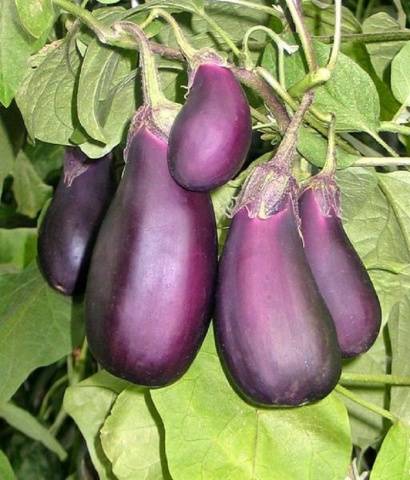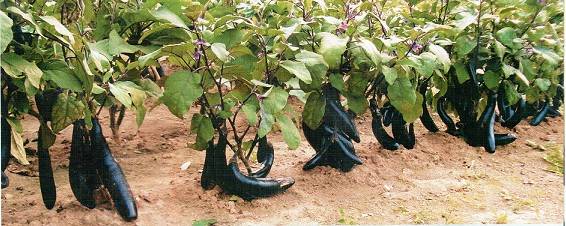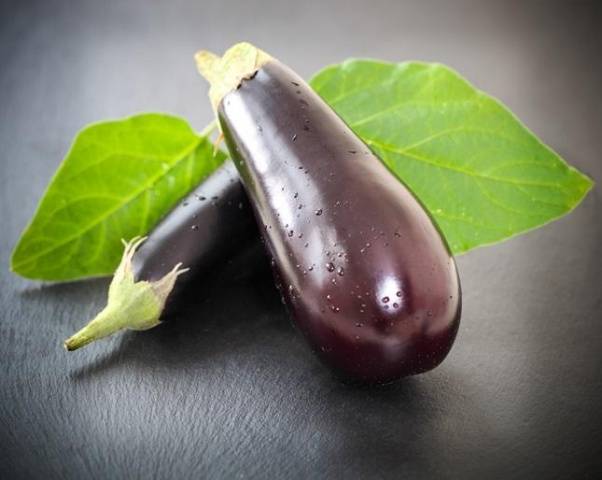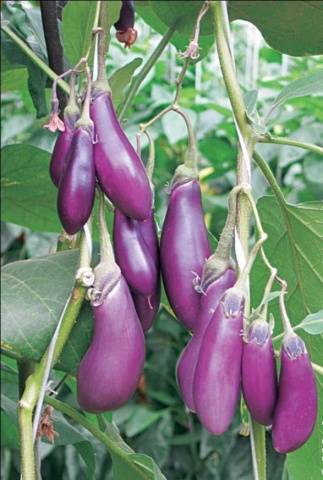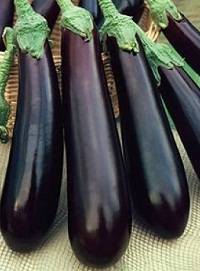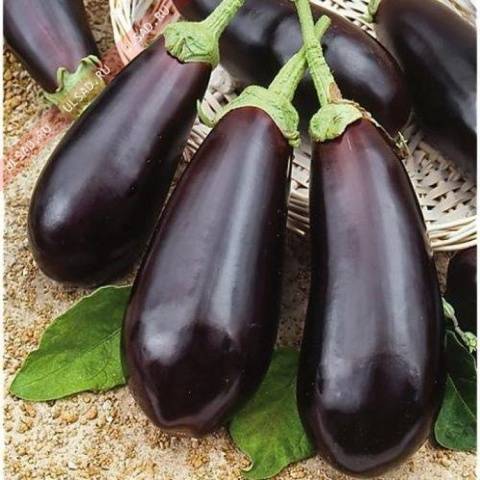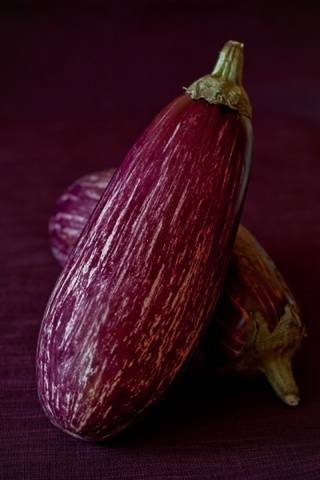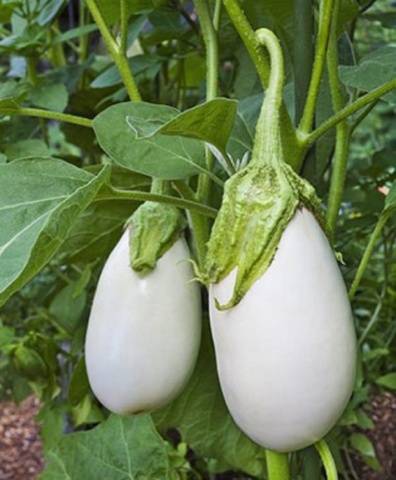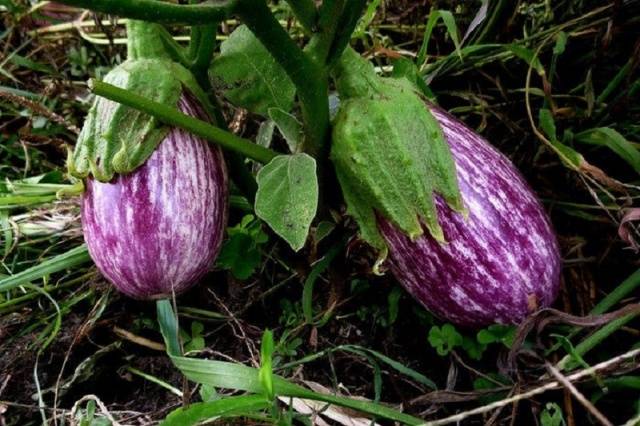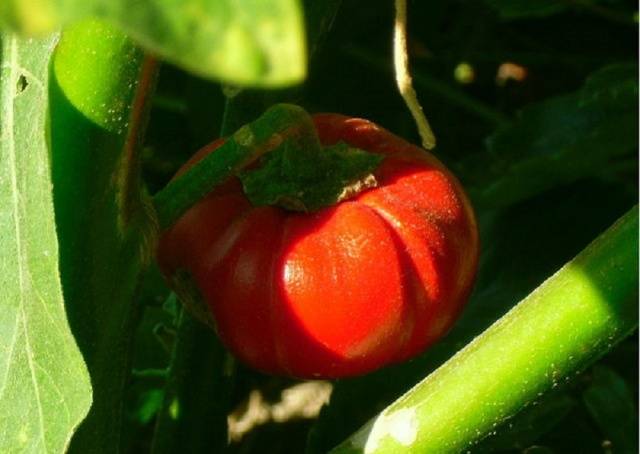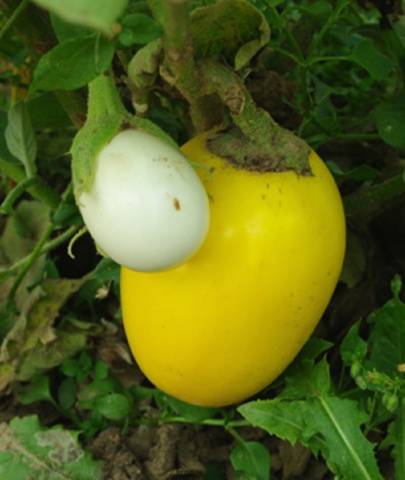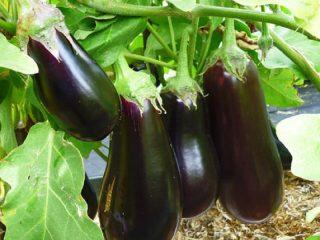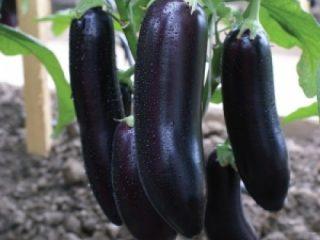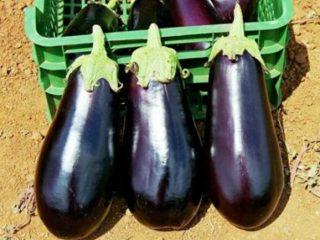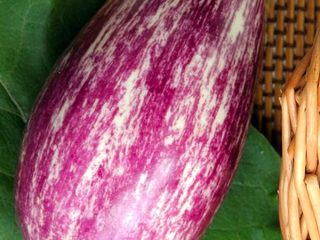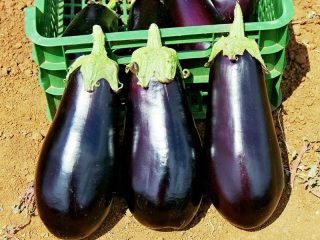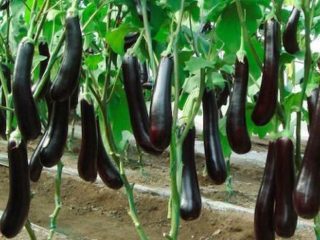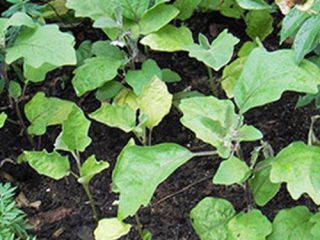Content
Eggplant is an unsurpassed vegetable. Contains a large amount of proteins, minerals and fiber. Therefore, it is considered a dietary product and is valued for its taste. Eggplants received professional recognition much later than other vegetables. Wild plant species are found in India, South Asia and the Middle East. The scientific name of eggplant is dark-fruited nightshade, the popular name is blue.
Although this name is no longer quite suitable. Currently, eggplant is known all over the world and is found in such a range of colors that calling it blue is inappropriate. New varieties are constantly emerging, providing greater nutritional value. Therefore, it is still better to choose a high-yielding eggplant variety among modern species. This can easily be explained by the fact that breeders are constantly working to improve varieties. Each new species surpasses the previous ones in many respects. Basic eggplant varieties differ in:
- color (from white and black to striped);
- form;
- bush size;
- ripening periods;
- taste;
- resistance to diseases.
According to the timing of ripening, immigrants from the south are divided into:
- early ripening;
- mid-season;
- late ripening.
If you decide to grow a healthy vegetable, you should first decide on the desired harvest time. In open ground there are more difficulties during the ripening period of vegetables. Elite varieties are demanding in terms of conditions and require care. If the weather doesn’t work out or your knowledge fails, you may be left without a good result. Yields are affected by:
- Any temperature fluctuation ambient air. A sharp increase or decrease leads to the fall of flowers and ovaries. Optimal values are considered to be 25 – 27 °C. Negative temperatures and prolonged decreases cause the death of plants. Below +15 °C Seeds do not germinate at all.
- Light intensity. In cloudy weather, eggplant growth slows down. Severe sunburns are no less harmful.
- Transplants. Eggplant does not tolerate transplantation well. Any damage to the roots leads to a decrease in survival rate and weakening of the plant.
- Planting Density. Thickened eggplant seedlings grow slowly and form small fruits.
- Soil composition. It is advisable to plant on light soils and fertilize the garden well.
But, for beginning gardeners and those who are going to grow eggplants for the first time, there are the most unpretentious and productive varieties. Very convenient types that are suitable for greenhouses and open ground at the same time.
Eggplants of early varieties
Early ripening vegetables are good for growing in greenhouses. In open ground they produce a stable harvest at favorable temperatures. Therefore, they are suitable for regions with warm climates. Beneficial for areas with unstable temperatures.Early ripening makes it possible to get a harvest before the cold weather. Which varieties deserve attention?
"Alekseevsky"
Suitable for open and closed ground. The shape is classic for lovers of dark purple color. By weight it is considered a medium eggplant. An adult fruit weighs up to 150 g and has no bitterness.
The ripening period is up to 130 days. Low-growing (up to 60 cm in height), semi-spreading plant with good transportability and high productivity. Seeds begin to be sown at the end of February and are planted in the greenhouse in mid-May. For open ground, the best time is early June. Susceptible to gusts of wind, prefers a sheltered growing location. Resistant to viral diseases.
"Robin Hood"
An excellent early ripening variety with high adaptive abilities. The fruits appear within 100 days after the seeds germinate. It has good survival rate and is considered a suitable variety for beginning gardeners. It can be grown even in unheated greenhouses without fear of losing the harvest. It has a large fruit (up to 280g), pear-shaped and traditional lilac color, weak thorns. Mature bushes are low-growing, spreading, up to 90 cm high. Valued for their unpretentiousness and taste. Suitable for all types of preparations and can be planted in gardens with different growing conditions.
"King of the North F1"
The earliest high-yielding variety. 90-100 days after germination, a rich harvest can be harvested. Valued for qualities such as:
- good seed germination;
- cold resistance;
- excellent fruit set.
Gives a stable harvest even when the temperature drops. The fruits are black-violet in color and have an elongated cylindrical shape. The taste is excellent.The absence of bitterness in the fruits allows you to prepare dishes from them without soaking. Planted in the garden using seedlings. There are no thorns on the stalk, which also attracts attention to this variety. In mid-May, seedlings are planted in greenhouses. For open ground, the time comes after the end of return frosts. It is recommended to grow the variety without film cover. This will protect the plants from damage by spider mites. The bush is low, bears fruit until autumn frosts. The fruits are long and can touch the ground, so it is advisable to mulch the soil.
"Purple Miracle F1"
An early hybrid eggplant variety with high yield. The advantages of the variety include stable fruiting, resistance to diseases and spider mite damage.
95-100 days after sowing, the fruits are ready for consumption. The bushes are compact, up to 120 cm high. The fruits are not too large, weighing up to 120-135 grams. The pulp is an unusual greenish-white color without bitterness. Suitable for growing in any type of soil. The planting density per 1 sq.m is only 5 plants. This will prevent thickening and increase fruiting.
"Joker"
A new type is the thornless carpal. One cluster contains up to 7 fruits in the shape of an elongated ellipse with thin skin. The unusual bright purple color gives the eggplant a unique charm.
The pulp is white, very tasty. An early ripening variety that will delight you with amazing fruits already on the 85th day after germination. The bush produces up to 50-90 pieces of high-quality fruits with strict adherence to agrotechnical requirements. It has good resistance against tobacco mosaic virus. The height of the bushes reaches 130 cm, density - no more than 5 plants per 1 sq. m. Offered for cultivation in open ground and greenhouses.
"Long Purple"
A very early variety, it takes only 85-90 days until the fruits are ripe from the moment they are planted in the garden. The bush grows very quickly and compactly, the height is no more than 55 cm. The fruits are large, up to 300 g each. It is valued for its excellent transportability, resistance to a number of pests and diseases, and retains its presentation for a long time.
We harvest in the middle of the season - medium varieties of eggplant
After harvesting the early eggplant varieties, the turn of the high-yielding medium varieties comes. The most popular and trusted gardeners are:
"Diamond"
Tested by many generations of eggplant lovers. High-yielding, proven variety. Fruit harvesting begins 110-150 days after emergence. The bushes are compact, not spreading, the height of which is no more than 55 cm. The fruits are dark purple, weighing up to 165 g with a pleasant taste.
On average it is 8 kg per 1 sq.m of area. Resistant to stolbur and mosaic, but susceptible to wilting diseases. It is characterized by good transportability, which is highly valued in industrial cultivation. Suitable for automated fruit picking.
"Sailor"
An alkaloid-free, high-yielding variety that will decorate not only the garden, but also the festive table. Very beautiful fruits will compensate for all the efforts to grow the vegetable.
They have an original striped color and a round or pear-shaped shape. Each weight reaches 400 grams. At the end of February, seeds are sown for seedlings. They are planted in the garden no earlier than May 20. It tolerates summer heat well and produces a good harvest at the beginning of summer and later.Valued for its good resistance to major eggplant diseases. You need to harvest carefully - the variety has thorns.
"Swan"
High-yielding mid-season eggplant with excellent taste and white fruit color. Harvesting begins 100 days after mass germination of seeds.
Cultivated in greenhouses and open ground. The bushes are low, erect. The plant can easily withstand heat and is resistant to diseases and major eggplant pests. The fruits are white with tender pulp. The highlight of the variety is the mild mushroom flavor of the fruit. It has high productivity. From one square meter you can get up to 18 kg of eggplants. Seeds are sown in mid-March, and seedlings are transplanted into the garden after 70 days. The planting density is normal - no more than 5 plants per square meter.
"Striped Flight"
A mid-season, high-yielding variety with an unusual name. Suitable for sowing in open ground and greenhouses, even unheated ones. The choice depends on preference and climatic conditions. The variegated colors of ripe fruits adorn the garden beds and the dining table. Resistant to changes in weather conditions, valued for its high fruit set in any conditions. The pulp is tender without voids and bitterness, suitable for freezing and drying. Resistant to transportation.
Harvest at the end of the season
Late varieties please gardeners the most. After all, at the end of summer, many vegetables have already finished bearing fruit, and weather conditions are worsening. And the latest ripening eggplants supply the table with a rich set of vitamins, proteins and minerals. Which varieties deserve attention?
"Black Beauty Late"
Gives a high yield 130 days after planting. The bush is low and spreading. The fruits are original pear-shaped, black and purple. Very large, the weight of one eggplant reaches 900 g. Tolerates adverse weather conditions well.
"Sofia"
New from breeders. Late, gives a high yield in 130-145 days. The large fruits are pear-shaped and dark purple in color. The weight of each reaches 700-800 g, the pulp is of good taste and light. Resists well against bad weather and common diseases of eggplants. Suitable for planting in outdoor gardens and greenhouse cultivation. In addition to the well-known eggplants, many plant growers plant varieties with amazing fruit shapes in their gardens:
- round;
- saber-shaped;
- oval;
- ovoid;
- cylindrical.
Eggplants with fruits of unusual color decorate the garden.
The varied shades of the fruit, from white to deep purple, delight the eye throughout the season. Get a high yield of pink eggplant, red, yellow or striped - the pride of every gardener.
Conclusion
When choosing a variety, you should take into account all the nuances and adhere to the recommendations for eggplant agricultural technology.
